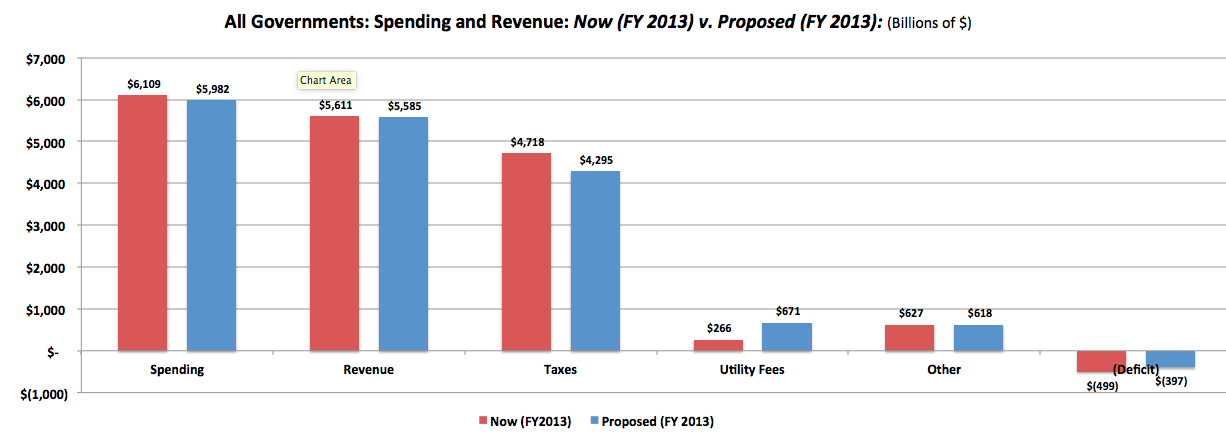It may be true, as Sir Henry Maine said, that law is “secreted in the interstices of procedure.”
The effort to put put American government in its proper place, however, is "secreted in the interstices" of budgets--thousands of local budgets, 50 state budgets, and the federal budget.
Government budgets do not fall from outer space. People create them. Assumptions, priorities, and specific policies that elected officials agree on, including detailed choices about how much to spend and where to raise revenue, drive budgets at every level. Changes in these assumptions, priorities, and policies in turn reshape budgets.
The many policy changes proposed here for redesigning American government--involving the creation of new programs, the elimination of existing ones, and the reform of user fees and taxation-- will result in dramatic changes in government budgets at every level. The biggest fiscal impacts will occur within government budgets, not on the overall budgetary picture. Despite the dramatic nature of the proposed reforms, there will be no dramatic change in overall government spending or revenue.
From Policy to Budget
Policy change is the driver of budget change. So it is useful here to summarize the major policy reforms that will most profoundly alter local, state, and federal budgets.
The Bottom Line
The bottom line for American government as a whole, if all of the reforms proposed here had taken effect in FY 2013, would be as follows:
The following chart illustrates these "mega" results.

But what about the details?
Precision has been a theme of this website: "What, exactly should government do? How, exactly, should it raise the dollars it needs? How, exactly, should it deliver services?"
So it is appropriate to share the details of precisely how spending and taxes would change...at all levels of government. What exactly would governmental budgets have looked like in a recent year--let's say Fiscal Year (FY) 2013--if the major policy changes proposed here were in full effect? How different would local budgets, state budgets, and the federal budget look?
The details are too lengthy to present on this page, but please: Read More ->
Overall
Viewed as a whole--that is, once local, state, and the federal budget are added together--the proposed policy reforms would not result in dramatic overall changes spending or taxes.
A significant tax decrease will be offset by a similar rise in utility fees. The deficit will shrink, if modestly, thus advancing the date when government budgets come into balance.
Spending and revenue would decline, but only somewhat. Taxes would drop more sharply, but offsetting this utility fees would rise sharply. The deficit would be smaller, but remain.
As Sherlock Holmes pointed out in his famous remark about the dog that did not bark in the night, the most striking fiscal conclusion about the major policy reforms proposed here is that they do not dramatically alter the overall fiscal picture of American government.